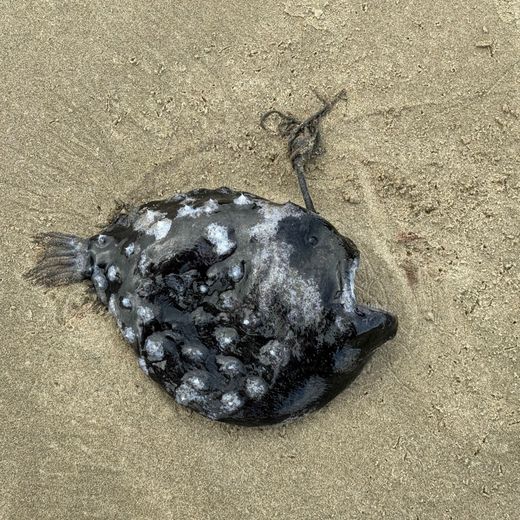A sea creature rarely seen by humans: bathers find an angler fish washed up for the first time on a beach


Ce poisson est le 32e poisson-pêcheur du Pacifique vu par l’homme. Capture d'écran Facebook
Pour la première fois dans l’histoire, un poisson-pêcheur unique s’est échoué sur une plage de l’Oregon, aux États-Unis.
A unique deep-sea angler's fish has washed up on an Oregon beach for the first time in recorded history, according to a local aquarium.
31 specimens worldwide
The Seaside Aquarium, located in Seaside, Oregon, posted a Facebook post about this remarkable discovery on May 18, 2024. An angler fish was found dead by local beachgoers near Cannon Beach. "Living in complete darkness, between 600 and 900 meters deep, these fish are rarely seen", explained the Seaside Aquarium .
Only 31 specimens have been recorded worldwide. The aquarium told Fox News Digital that this fish is the 32nd Pacific game fish seen by man.
"While a handful of gamefish have been recorded in New Zealand, Japan, Russia, Hawaii, Ecuador, Chile and California, this is the first record on the Oregon coast to our knowledge, can be read on Facebook.
"Little is known about their biological history, but what is known is particularly fascinating. Like other anglerfish, they use the light emitted by a phosphorescent bulb placed on their forehead to attract their prey."
Females 10 times larger than males
These sea creatures eat whatever they can find on the sea floor. Females are 10 times larger than males and are the main hunters. Males only live to find a female to mate with, otherwise they die.
When the male detects a female, he bites her then releases an enzyme which digests the skin of his mouth as well as that of the part of the body of the female he bitten, fusing them together thus up to the level of the blood vessels.
The male then gradually withers away, first losing his digestive organs, then his brain, his heart, his eyes. Only a pair of gonads survive, releasing sperm in response to hormones carried by the female's blood. The female is then ready to lay eggs.




